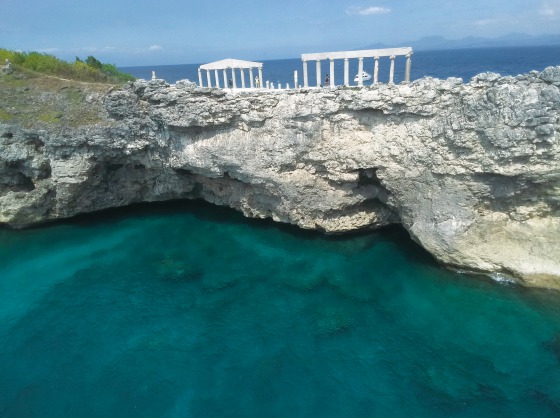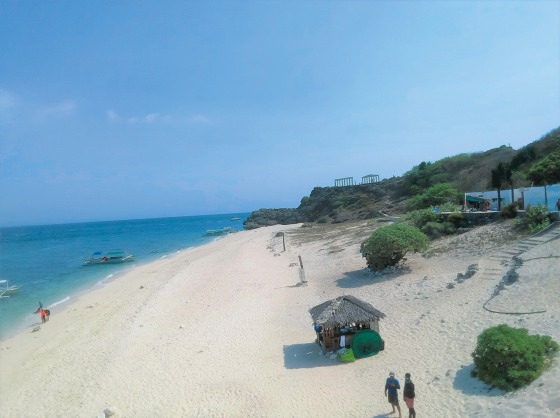たまには都会の人混みを離れ、どこか遠く…たとえば離島にでも旅がしたい。
でも、できれば週末に日帰りか1泊2日、低予算で――。
こんなわがままをかなえる島が、バタンガス州にあった。
「放棄された楽園」
フォーチュンアイランド
リゾート開発の「夢の跡」
フォーチュンアイランドは、バタンガス州ナスグブ町西岸から14キロメートルにある無人島だ。面積は0.27平方キロメールと、東京ドームでいえば5.8個分。8個分ある首都圏パサイ市のモール・オブ・アジアより小さい。北西から海流を受ける縦長の島は、南東部に全長20メートルの砂浜を擁する。

来訪者を迎えるのは、まばゆい陽射しをはね返し、痛いほどに輝くアイボリーホワイトの砂浜、切り立った崖、濃緑の灌木(かんぼく)、エメラルドグリーンの海、そして、古代ギリシャ風建設物の遺構だ。南端の石灰岩の崖上に立つイオニア様式の列柱の威容は、まるで9000キロ先のエーゲ海の島に迷い込んだような錯覚を来訪者に与える。

しかしなぜ、フィリピンにギリシャ遺跡があるのか。
それは約30年前にさかのぼる。1972~80年にバタンガス州知事を務めたホセ・レビステ氏は90年代、自身が所有する同島をリゾート地として開発。会員制の「フォーチュンアイランドリゾートクラブ」は1995年操業を開始した。島はギリシャ古典期のアクロポリス(城塞)をモチーフに開発され、プール、バスケットボールコート、ヘリポート、爬虫(はちゅう)類・蛇の動物園、博物館も運営されていた。
しかし、水源の欠如に加え、毎年の台風被害も激しいことから採算が合わず2006年に放棄された。
現在は、2013年から新たな経営者となった韓国系投資家が廃墟をそのままに、島を観光客に開放している。島はコテージ(東屋/あずまや)など最小限の施設のみ設置するアウトドア型の観光地となっている。

Abandoned Paradise
Fortune Island
Fortune Island is an uninhabited island located 14 kilometers off the west coast of Nasugbu Municipality, Batangas. The vertically long island, which receives ocean currents from the northwest, has a 20-meter-long sandy beach on its southeastern side. Visitors are greeted by ivory-white beach, sheer cliff, dark green shrubs, emerald green waters, and the remains of ancient Greek-style structures. Looking up at the Ionic columns rising above the cliffs, you may feel as if you wandered 9,000 kilometers away to an island in the Aegean Sea.
However, why are there Grecian ruins in the Philippines?
In the 1990s, former Batangas Governor, José Antonio Leviste began developing Fortune Island as a resort area based on the motif of an acropolis from the Greek classical period. The exclusive resort club, Fortune Island Resort Club, started operations in 1995. The club used to operate a swimming pool, basketball court, heliport, reptile and snake zoo, and museum.
However, lack of water sources and significant typhoon damage made it difficult for the club to be profitable, resulting in the abandonment of the resort in 2006. In 2013, a Korean business person, opened the island anew, letting the ruins be as they are.
Today, the island is an outdoor tourist attraction with minimal facilities such as gazebos (cottages).















